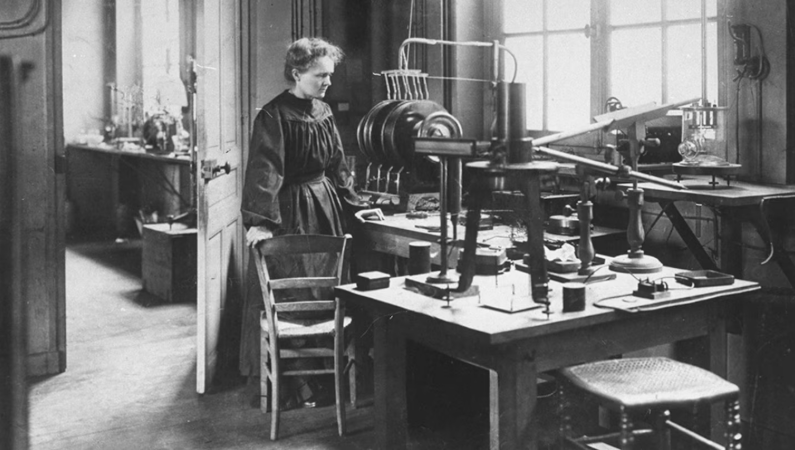
If you’ve ever seen your insides on an x-ray, you can thank Marie Curie’s understanding of radioactivity for being able to see them so clearly.
Born Maria Sklodowska in Poland on November 7, 1867, to a father who taught math and physics, she developed a talent for science early. But the University of Warsaw, in the city where she lived, did not allow women students. Determined to become a scientist and work on her experiments, she moved to Paris, France, to study physics at a university called the Sorbonne.
In 1895, she married Pierre Curie. Together they discovered two new elements, or the smallest pieces of chemical substances: polonium (which she named after her home country) and radium. In 1903 they shared (along with another scientist whose work they built on) the Nobel Prize in physics for their work on radiation, which is energy given off as waves or high-speed particles. She was the first woman to win any kind of Nobel Prize.
Curie continued to rack up impressive achievements for women in science. In 1906, she became the first woman physics professor at the Sorbonne. In 1909, she was given her own lab at the University of Paris. Then in 1911, she won a Nobel Prize in chemistry. She’s still the only person—man or woman—to win the Nobel Prize in two different sciences.
In 1914, during World War I, she created mobile x-ray units that could be driven to battlefield hospitals in France. Known as Little Curies, the units were often operated by women who Curie helped train so that doctors could see broken bones and bullets inside wounded soldiers’ bodies.
After the war ended in 1918, Curie returned to her lab to continue working with radioactive elements. But those can be dangerous in very large doses, and on July 4, 1934, Curie died of a disease caused by radiation. By that time, though, she’d proven that women could make breakthroughs in science, and today she continues to inspire scientists to use their work to help other people.
原创编写 版权所有 侵权必究! 每日更新 个性化阅读 英语飙升!

 更多优质学习内容
更多优质学习内容

